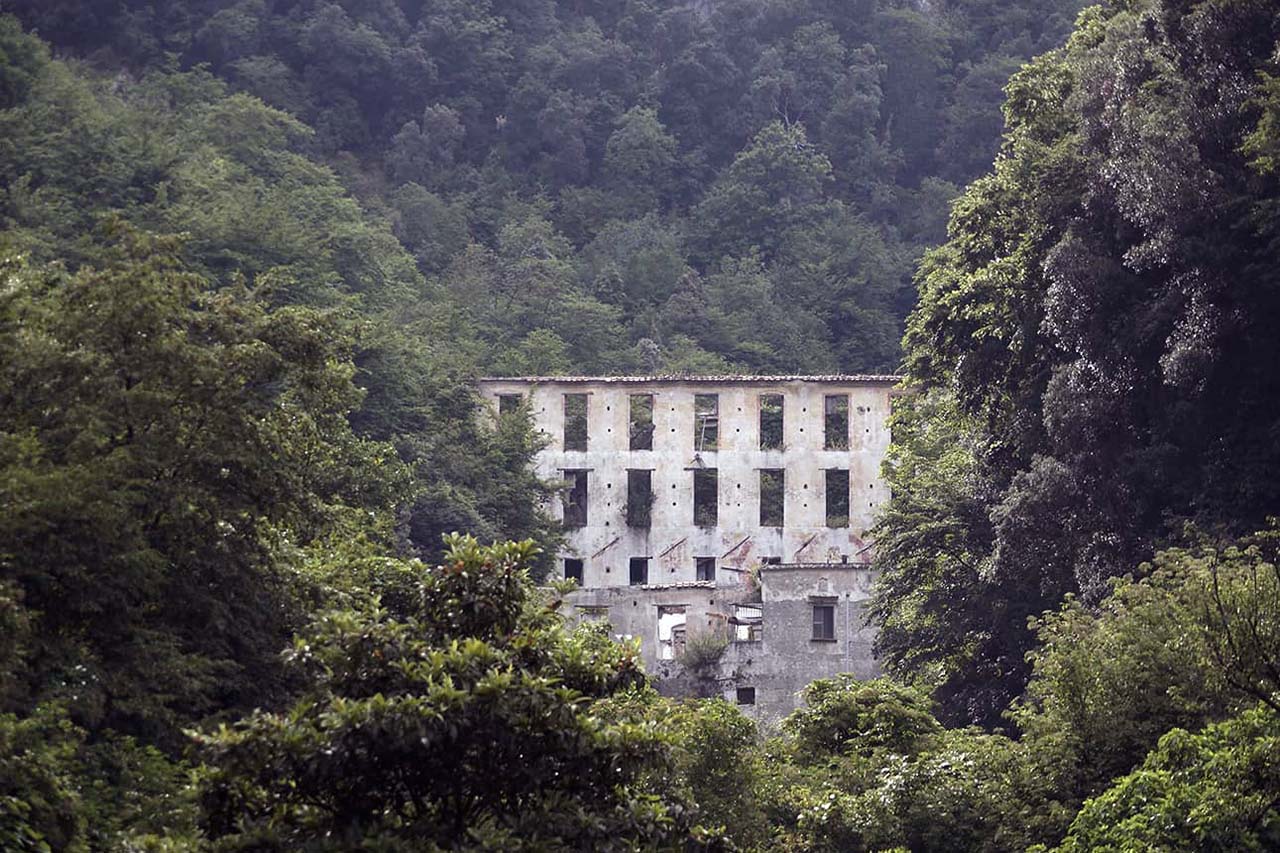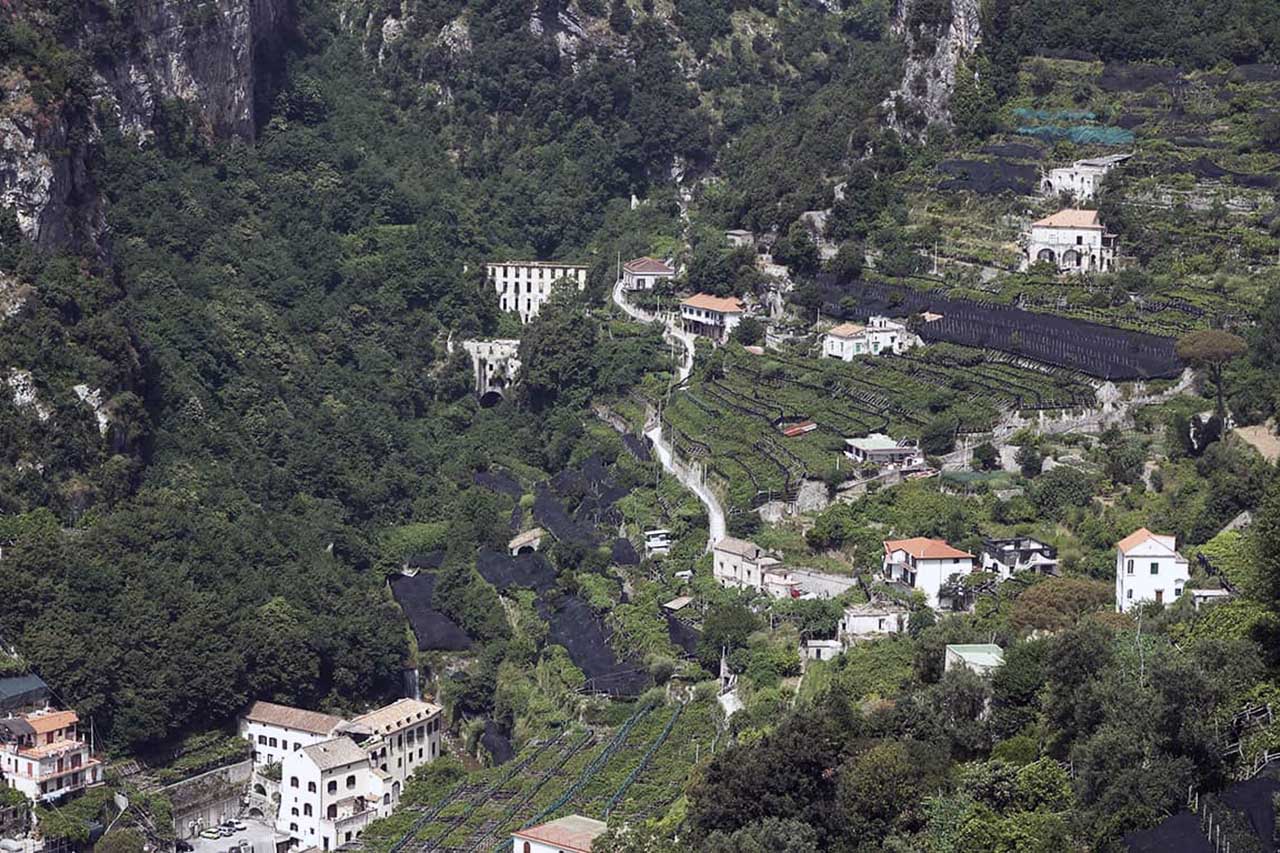Reviving the area through enhancing its history and culture, recovering the ancient waterways from developing a zero-impact economy. La Divina: an example of innovation and sustainability
April 28th, 2021. By Vito Pinto
A secret Amalfi Coast has been overlooked for way too long. But thankfully, there are a few projects lined up to ensure that those green territories, suffocated by industrial development, can be restored in an essential and unique operation. The idea is to bring back to life those ancient waterways.
In the past, they had served as a fundamental source of eco-sustainability for this part of the Salerno Gulf. This area of the Amalfi Coast was a place for innovation and inspired poets and artists of the past. Today it is a place loved by tourists from all over the world every year to enjoy its beauty.
Waterpower Protocol
The architect Luigi Centola is the heart and the brain behind the Waterpower project: a protocol focused on the requalification and reused for cultural-tourist programs of abandoned factories in the area. We are talking about fifty buildings spread around the landscapes run by five rivers: across the valley of Bonea to the one in Canneto di Amalfi, going through the two Reginna valleys, and running with the Dragone river located between Scala and Ravello.
The Waterpower protocol won a few years ago the Lafarge Holcim Awards, the most important award for sustainable construction at an international level. “For years, general plans have blocked the possibility of recovery of these areas, working against sustainable development and employment around the Amalfi Coast. The Waterpower protocol wants to change that and offer a new way to think about water as a resource to use with respect, just like they did in the past. Water is a source of energy and life, and we need to fight against the water emergency affecting the entire planet,” says the young architect.
An ecological museum
The new general urban planning has finally created the conditions to save 35 old Amalfitan paper mills and 50,000 square meters of abandoned land in danger of collapse. It is located in the river valleys and those terraces that slope down from the mountains to the coast. Those are places that were so dear to M. C. Escher.
The project was first launched a few years ago, but it has been shaped with new conscious civic and administrative awareness to better serve its purpose since then. The base of that proposal was used recently by the Archeoclub d’ Italia, which aims to reuse those lands to create an innovative eco-museum. The idea is to recover those territories that have been neglected so far. The intention today is to tell the story of these places, focusing on sustainability and innovation.

A chance promoted by Archeoclub d’Italia
“The Amalfi Coast, especially the inland areas, could be the first experimental construction site to build an innovative state-of-the-art ecological museum, thanks to Archeoclub d’Italia and the Landscape architecture Department. The webinars organized by the association – from the study of sacred space to defining how to restore ruins – ended with a conference identifying the best tools for regenerating peripheral and fragile territories. The ecological museum aims to kickstart an eco-design process involving the entire territorial and cultural framework of local communities, public and private institutions, associations and universities, entrepreneurs, and owners. Thanks to the study conducted by the Archeoclub, it was possible to define possible objectives, tools, and devices while taking into account the recovery fund and the resources that can be put in place.” explains Francesco Finocchiaro, national head of the Architecture Department of Archeoclub d’Italia.
Promoting the territory
A trajectory that finds the architect Luigi Centola in agreement. “To overcome the social-economic crisis that will face because of the pandemic is essential to share ideas and find the best way to bring territories, people, and possibilities together. Only with this mindset will we be able to attract new kinds of tourism to the Amalfi Coast”.
And to be able to make it all work, collective awareness is needed; this project could be the turning point of innovation and employment, especially for the younger generations of the Amalfi Coast’s entrepreneurs. A way to also help tourism move forward to new ways of addressing tourists and enhancing the territories.

Costa Diva Tour
We must highlight that through this commitment. It would be possible to recover hydraulic spaces where the Romans’ and Arabs’ knowledge came together with the hard work of the Amalfi people. It would mean bringing back to life essential pieces of our history and culture. Waterways would return to being an integral part of the area, driving zero-impact economic development.
The original and innovative use of hydraulic power through lifts, racks, and funiculars will guarantee comfortable pedestrian access to the river valleys. It is the exaltation of water power and the celebration of the hydrological engineering of three continents, such as Europe, Africa, and Asia. In addition to this, the rehabilitation of the thousand-year-old structures will make the Costa Diva Tour even more impressive.
The challenge of ecology
This mountainous strip of land, part of a landscape of undisputed beauty such as Salerno and Naples, is ready to become an innovative area to be later offered as an eco-sustainable example that, hopefully, can be replicated in other parts of the world. This a tough challenge that a community that once had “ecology: a challenge for the future” can face and win. We are talking about a community of people who, in the past, fought big international corporations who wanted to drill in the Gulf for oil.
During the centuries, the people have created trends and trades that have been skilfully distributed throughout the territory. Many excellencies of this area come to mind: the Vietri ceramic, the Positano fashion, the music from Ravello, anchovies dripping, the premium wine of Tintore, and all the food traditions. Moreover, we also need to mention the Sfusato lemon, the unique, incomparable lemon that cannot be replicated anywhere in the world.
Therefore, it is a complex and perhaps tricky project. It aims to invest funds and work hard to recover the territories, seeking the involvement of all the parties for a new landscape. Therefore, it is an occasion to enhance the perfect balance between man and nature, something this territory has and should be proud of.
Geo-Archeo-Trekking
Moreover, Archeoclub Italy is ready to launch a new project: the Geo-Archeo-Trekking. Rosario Santanastasio, the national head of Archeoclub d’Italia, said: “It’s a new way of connecting with the territory so that people can understand it better in its geological and archaeological aspects. The new frontier of open-air tourism that we are sure would attract lots of people in the next months”.
On the latest World Earth Day, geologist Endro Martini, President of Italy Water Forum 2024, the committee promoting Italy’s candidacy to host the Tenth World Water Forum, said: “Italy is a center of water innovation, studies on climate change and a lab of education. On the Amalfi Coast, recovering the canals built by the Arabs has created a water system that allows the saving of water. I think it’s important to share this story on the eve of World Earth Day so everyone can be aware of it”. It lines up with the words of Francesco Finocchiaro, national head of the Architecture Department of Archeoclub d’Italia, who said: The starting point is the coming together; the path we need to follow is the one of sharing; the tools we have to use are the projects, and the goal is happiness”.
(Translation by Michela Pandolfi)

